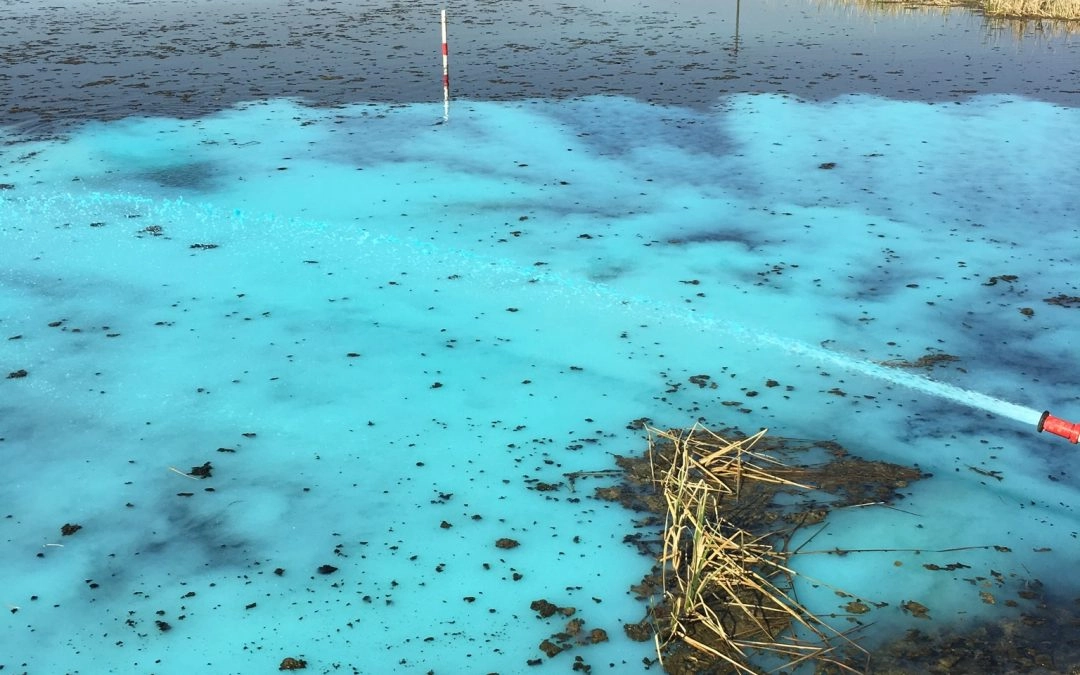Beat the Heat: Everything You Need to Know about Treating Reservoirs During the California Summer

When the California Summer is in full swing, treating your reservoir for algae blooms becomes critical. We are approaching triple-digit weather, and, in this state, that means the heat is here to stay. The heat also means that large algae bloom in stagnant bodies of water like reservoirs can happen seemingly overnight. If contaminants such as this find their way into your irrigation system, this may have an affect on your crop yield.
Warm Weather and Algae Bloom
The summer months are the most critical in agricultural water treatment. Algae does not need extreme heat to facilitate growth, but it sure helps. Warm water presents a favorable environment to these pesky life forms because it allows for better movement through the water and to the surface. It also gives the algae the chance to reproduce quickly. This is why you may check in on your reservoir on a Tuesday to see it fairly clean and clear only to return on Thursday to see a thick layer of algae across a good portion of the reservoir’s surface.
The problems begin when algae start to make their way into your irrigation system and ultimately, affect your irrigation performance. You may first start to see your irrigation filters increase in pressure and decrease in flow rate. This is manageable in cooler weather as your treatment provider can remediate the problem on sight. As the bloom grows, however, the filtration stations can become clogged. Clogging prevents these devices from doing their job properly, leading contaminates to make their way into your actual irrigation lines.
Micro-irrigation Line Plugging
Again, clogging or plugging is your main issue. Once in your drip lines, the algae continue to populate, creating a film of biofouling throughout your lines. This will eventually plug your riser screens or emitters. Plugged riser screens and emitters mean that your crops, which are already being tested by the hot weather and drought restrictions, will receive inadequate irrigation.
There are various ways to treating a reservoir for an algae bloom. The most common is to shock your drip lines or even your reservoir with oxidizing chemistry. At that point, however, the damage caused by loss of irrigation via plugged emitters has already been done. A thirsty crop is a low-yielding crop.
Prevention and Maintenance
Preventative treatments can save you time and money. Consider opting for reservoir treatments on a regular schedule instead of waiting for the inevitable to occur. By treating your reservoir for algae bloom at the beginning of the growing season, in the middle of the season, when heat is about to hit its peak, and finally, at the end of the season, you can finally beat the heat.
